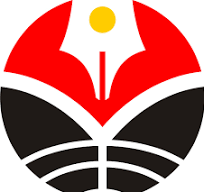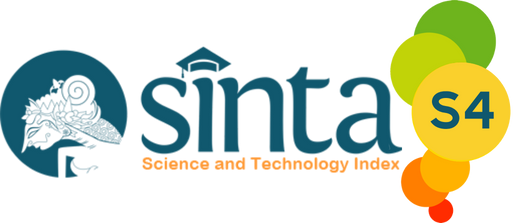MENANAMKAN KONSEP PEMBELAJARAN BERBASIS STEAM (SCIENCE, TECHOLOGY, ENGINEERING, ART, AND MATHEMATHICS) PADA GURU-GURU SEKOLAH DASAR DI PACITAN
Abstract
ABSTRACT
This article is a report of a community partnership program to introduce STEAM-based learning concepts (science, technology, engineering, art, and mathematics) for elementary school teachers in Pacitan Regency. STEAM-based learning is seen to be compatible with elementary thematic learning because they are not rigidly restricted by subjects, but an integration of various subjects that are packaged into a topic that could be discussed in terms of scientific, technological, engineering, artistic, and mathematical. The evaluation of the program is carried out using a questionnaire. It is found that after attending the training, the participants have a high enthusiasm for STEAM, a good understanding of the STEAM-based learning concepts, and able to see the compatibility with thematic learning in elementary schools. However, the participants still need further assistance to realize the concepts into real learning.
Keywords
Full Text:
PDF (Bahasa Indonesia)References
Kamienski, N., & Radziwill, N. (2018). Design for STEAM: Creating Participatory Art with Purpose. The Steam Journal, 3(2). https://doi.org/10.5642/steam.20180302.08
Long, R., & Davis, S. (2017). Using STEAM to Increase Engagement and Literacy Across Disciplines. The Steam Journal, 3(1). https://doi.org/10.5642/steam.20170301.07
Maeda, J. (2013). STEM + Art = STEAM. The Steam Journal, 1(1). https://doi.org/10.5642/steam.201301.34
Menteri Pendidikan dan Kebudayaan. (2013). Peraturan Menteri Pendidikan dan Kebudayaan RI No 67 Tahun 2013 tentang Kerangka Dasar dan Struktur Kurikulum SD/MI. Kementerian Pendidikan dan Kebudayaan RI.
Radziwill, N., Benton, M., & Moellers, C. (2015). From STEM to STEAM: Reframing What it Means to Learn. The Steam Journal, 2(1). https://doi.org/10.5642/steam.20150201.3
Riley, S. (n.d.). Getting Ready for Careers in STEAM. Retrieved September 22, 2019, from https://www.affordablecollegesonline.org/college-resource-center/steam-careers-art-schools/
Sungkono. (2006). Pembelajaran Tematik dan Implementasinya di Sekolah Dasar. Majalah Ilmiah Pembelajaran, 2(1), 51–58. https://media.neliti.com/media/publications/220102-pembelajaran-tematik-dan-implementasinya.pdf
Thibaut, L., Ceuppens, S., De Loof, H., De Meester, J., Goovaerts, L., Struyf, A., Boeve-de Pauw, J., Dehaene, W., Deprez, J., De Cock, M., Hellinckx, L., Knipprath, H., Langie, G., Struyven, K., Van de Velde, D., Van Petegem, P., & Depaepe, F. (2018). Integrated STEM Education: A Systematic Review of Instructional Practices in Secondary Education. European Journal of STEM Education, 3(1), 1–12. https://doi.org/10.20897/ejsteme/85525
Triyono, M. B. (2017). Tantangan Revolusi Industri ke 4 (i4.o) bagi Pendidikan Vokasi. Seminar Nasional Vokasi Dan Teknologi (Semnasvoktek), 1–5. http://eproceeding.undiksha.ac.id/index.php/semnasvoktek/article/download/653/495/
Uswah. (2019). STEAM, Sebuah Pendekatan Pembelajaran Berbasis Seni. Articles. http://binus.ac.id/knowledge/2019/05/steam/
Wijaya, A. D., Karmila, N., & Amalia, M. R. (2015). Implementasi Pembelajaran Berbasis STEAM (Science, Technology, Engineering, Art, Mathematics) Pada Kurikulum Indonesia. Seminar Nasional Fisika Dan Aplikasinya, 85–88.
Refbacks
- There are currently no refbacks.








